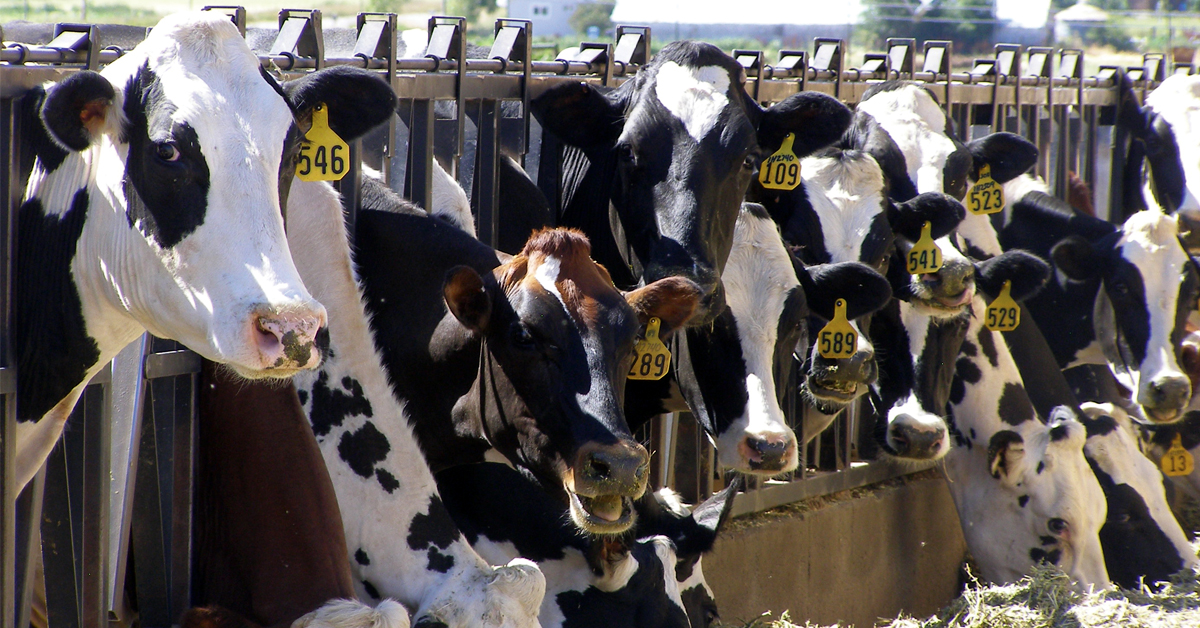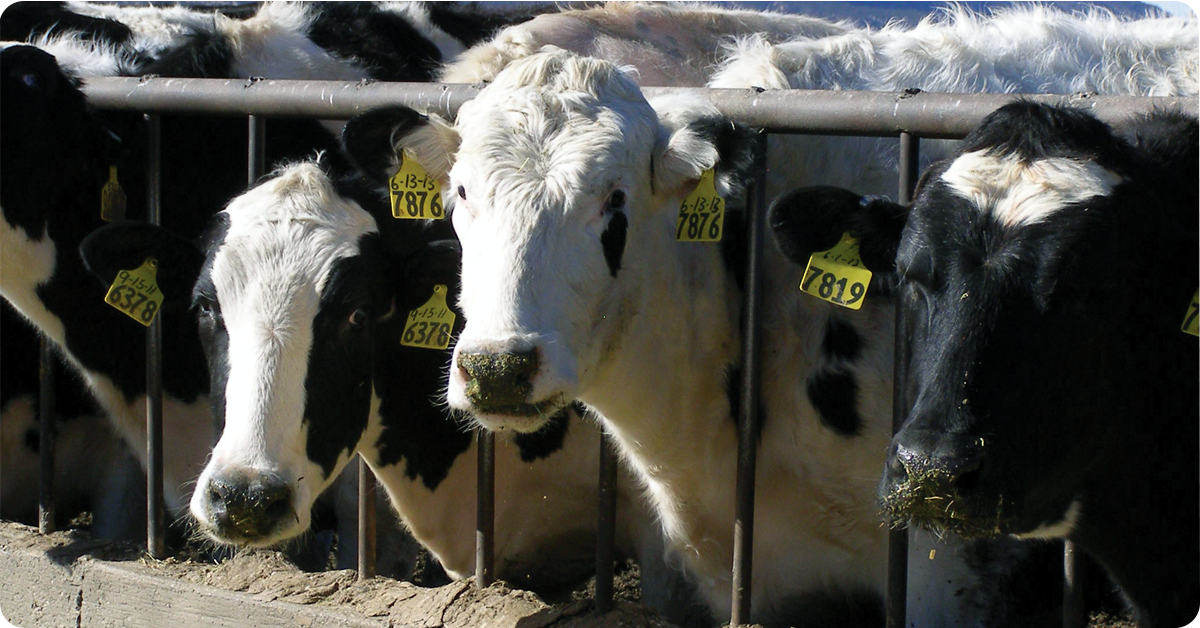
While in graduate school, my professor always referred to dairy cattle as “Metabolic Ferrari’s.” As such, these “Metabolic Ferrari’s” need a fuel source. We have all heard the adage that dry matter intake (feed intake) drives milk production in dairy cattle. While increasing feed intake seems like a pretty simple concept to master, actually achieving good intake is complex. Although feed intake is affected by a vast number of factors, the major elements can be grouped into the environment, forage management, as well as feeding and bunk management.
Environmental Stressors
The latest edition of Nutrient Requirements of Dairy Cattle summarizes some environmental effects on feed intake. The environment plays a major role in feed intake in dairy cattle, especially when the temperature is outside the thermal neutral zone (between 40- and 70-degrees Fahrenheit).
When the weather turns cold, cattle compensate by increasing feed intake to produce more heat. However, when temperatures rise above the thermal neutral zone, feed intake is typically suppressed and has been shown to decrease up to 50 percent, depending on the severity and duration of the heat. To mitigate the impact of heat stress in cattle, one can implement different management techniques along with dietary manipulations.
Addressing Environmental Stressors
There are many management strategies to help mitigate the effect of the environment on feed intake, but they all focus on the crucial effects of keeping cows as comfortable and cool as possible. One method to consider is cooling cattle on the farm.
Cooling cows could include using fans in the parlor, shades in the corral, and soaker lines in the feed alley and the parlor. Implementation of these methods will greatly depend on the facilities at the farm. Water can be difficult to handle, so shades or fans might be the only option. The main goal is to get the heat off the cow in the best way possible.
Nutritional Aids
Feeding specific nutrients to reduce the impact of heat stress on cattle has been incorporated for many years. Methods for mitigating the impact of the heat on intake include feeding higher levels of buffers, fats, yeast/probiotic pack, electrolytes and ensuring there is a fresh source of cool water.
Feeding higher levels of buffer during heat stress can help compensate for the decreased saliva production from reduced rumination, which should aid in keeping the rumen healthy by neutralizing rumen acids to help maintain or increase feed intake. Fats are often fed to increase the energy density of the diet during the warmer months to help with the potential for reduced feed intake.
Yeasts and probiotics help maintain the integrity of the rumen and aid in the breakdown of nutrients. Some yeasts will also aid in the breakdown of fiber in the rumen, which may lead to increased feed intake. One electrolyte that plays an important role in the summer is potassium. Potassium is essential in sweating which is a cow’s way of mitigating heat stress which increases feed intake. Fresh cool water is needed to help bring down the core temperature of cattle, especially as cattle sweat and pant to release heat.
Choose a livestock water source to reduce heat stress on cattle
Forage Management
Optimizing feed intake begins before forage arrives on the operation. To achieve greater intakes, forage quality must be above average. Cutting crops before maturity will increase forage digestibility, often leading to increased intake and greater production. Low quality forage tends to stay in the rumen longer, reducing intake because of physical fill.
High forage diets also tend to have lower feed intakes due to physical fill unless the forage is highly digestible. However, high forage diets with high digestibility can have good intake and production.
Bunk Management
Feed intake can only be optimized when bunk management is up to par. Some aspects of bunk management include: mixing the correct ration, keeping the right amount of feed in front of the cattle, and keeping the feed fresh.
Managing bunks is challenging and requires an aggressive and intentional effort to realize the desired result. A question that should always be asked is, “Are the cows getting the proper and right amount of the TMR?” Ensuring that the feeder loads correct amounts of each ingredient is vital to optimizing feed intake and milk production. Adding too much forage can limit intake, whereas the addition of extra concentrate could affect rumen health, resulting in decreased intakes.
Software used to collect on-farm-feed data can be a great tool to help track and reduce the deviation in the feed that is in the TMR, but it does not always mean that the cattle are getting what they should. Consistent monitoring of feed bunks is always needed to ensure that cattle consume the proper feed.
Fresh Feed
Maintaining fresh feed in front of cattle is another way to optimize feed intake. It is especially crucial during the summer but applies all year long. Like us, cattle have preferences, and old feed is not necessarily their first choice. To help keep feed fresh, feed multiple times per day and keep the feed pushed up. If there is a gap between the feed and bunk, it should be considered that the cattle are out of feed. They know it is there, but they cannot access it.
Another aspect of keeping fresh feed in front of cattle is cleaning the bunks. Generally, warmer weather requires more push up and cleaning of the feed bunk. Lactating cattle should have access to feed for at least 20 hours per day. Depending on bunk space, that number should increase if overcrowding occurs. Make sure that even the timid cows have feed available at all times.
Helping Optimize Intake
Optimizing feed intake in dairy cattle is challenging and often overlooked. To maximize intake, manage the environment as best you can and keep fresh feed in front of the cows. Every dairyman should have the goal of optimizing feed intake. Remember, you don’t have a Ferrari and hold it back.
Greater milk production leads to the need for greater feed intake to meet those demands. Reach out to your local IFA feed and nutrition specialist for help optimizing your cattle feed intake or to answer any questions you might have.
Discover IFA Feed & Nutrition Services
Written by Jared Judy, PhD, IFA Feed and Nutrition and originally published in the IFA Cooperator magazine (vol. 88, no. 3) Fall 2022.
Jared Judy is an experienced Dairy and Beef Nutritionist. Driven by his passion for the livestock industry, Jared earned his Ph.D. from the University of Nebraska in Ruminant Nutrition where he focused on precision feeding techniques in cattle. As an IFA nutritionist, his primary role is to optimize rations that support optimal production and health in cattle. Jared sets himself apart by his energetic determination to help producers succeed.


